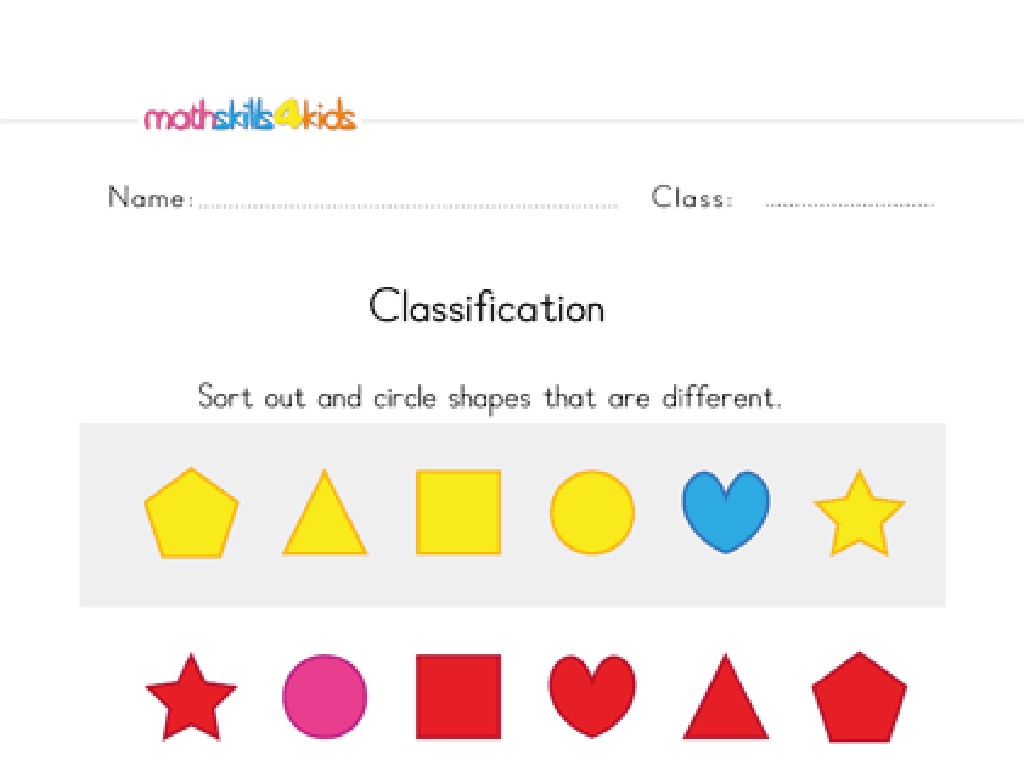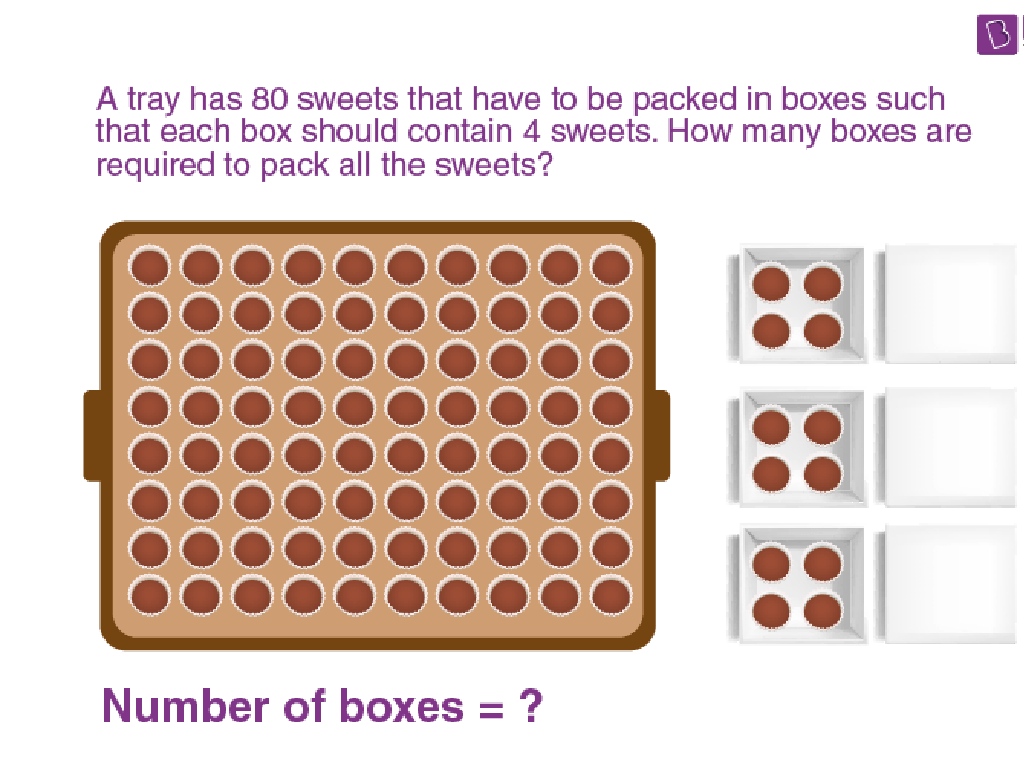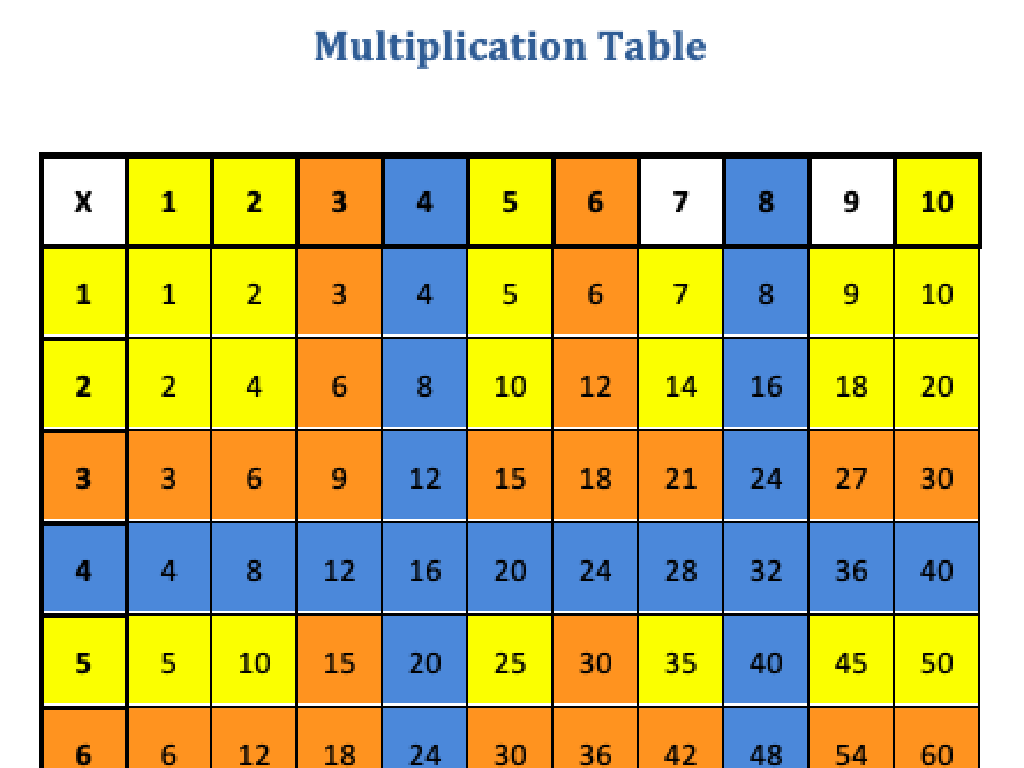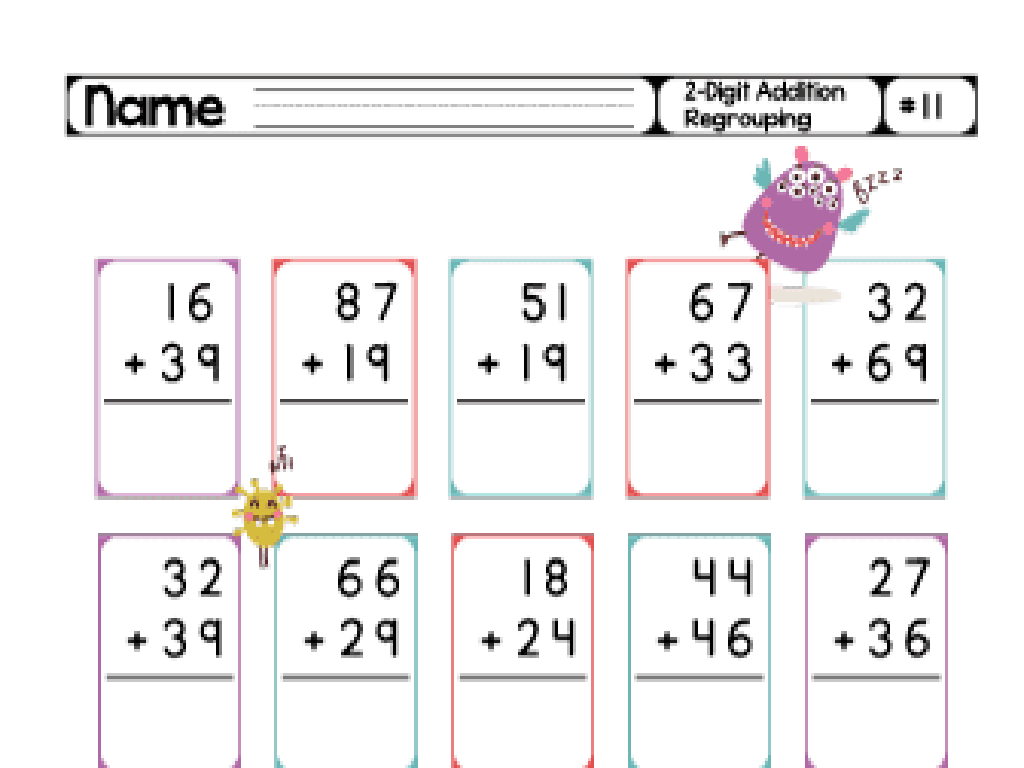Integer Addition And Subtraction Rules
Subject: Math
Grade: Eighth grade
Topic: Integers
Please LOG IN to download the presentation. Access is available to registered users only.
View More Content
Welcome to Integers!
– Understanding Integers
– Integers include positive, negative numbers, and zero.
– Importance in mathematics
– Integers are foundational for advanced math concepts.
– Integers in real life
– Temperature changes, bank transactions, and elevations.
– Class activity planned
|
This slide introduces the concept of integers, which are the set of whole numbers that include positive numbers, negative numbers, and zero. Emphasize the importance of integers in various branches of mathematics, including algebra and number theory. Provide real-life examples where integers are used, such as in measuring temperature changes (above/below zero), bank account deposits and withdrawals, and above/below sea level elevations. Prepare a class activity where students will apply their understanding of integers in practical scenarios. The activity should be engaging and encourage participation from all students. Possible activities include integer addition/subtraction relay, integer number line races, or real-life problem-solving scenarios involving integers.
Understanding Integers
– Define integers
– Integers include whole numbers and their opposites
– Explore positive & negative numbers
– Positive numbers are above zero, negative are below
– Zero: The neutral integer
– Zero is neither positive nor negative; it’s neutral
– Integer addition & subtraction rules
– Rules help us combine integers to get new numbers
|
Integers are the set of whole numbers and their negatives, including zero. It’s crucial for students to understand that positive numbers are greater than zero and represent quantities of something, while negative numbers are less than zero and often represent a lack or debt. Zero is the middle point on the number line and is neither positive nor negative. When adding or subtracting integers, different rules apply depending on the signs of the numbers involved. This slide will set the foundation for understanding these rules and how to apply them in mathematical operations. Encourage students to think of real-life scenarios where they use integers, such as temperatures above and below zero, or money earned and owed.
Integer Addition Rules
– Adding positive integers
– Adding negative integers
– Use number line for addition
– Visualize adding integers on a number line
– Work through examples
– Examples: 5 + 7 = 12, -3 + (-2) = -5, 4 + (-6) = -2
|
This slide introduces students to the rules for adding integers, a fundamental concept in 8th-grade mathematics. Start by explaining the process of adding positive numbers, which students are likely familiar with. Then, introduce the concept of adding negative integers, emphasizing that adding two negative numbers results in a more negative sum. Use a number line to demonstrate how to add integers visually, which can help students understand the concept of moving in positive or negative directions. Finally, provide examples to illustrate each rule. Encourage students to solve these problems on their own and to come up with additional examples to practice.
Integer Subtraction Rules
– Subtract by adding the opposite
– Instead of subtracting, add the opposite number: 10 + (-3)
– Subtraction as addition’s inverse
– Example: 10 – 3 = 7
– Subtracting a positive is like adding a negative
– More examples: -5 – (-8), 7 – (-2)
– Negative minus a negative becomes addition: -5 + 8, 7 + 2
|
When teaching integer subtraction, emphasize that subtraction can be thought of as adding the opposite. This concept helps students understand subtraction as the inverse of addition, simplifying the process. Start with simple examples like 10 – 3, and then move to more complex ones involving negative numbers, such as -5 – (-8) and 7 – (-2). Encourage students to practice by finding the opposites and using addition to solve subtraction problems. This method is particularly useful when dealing with negative numbers and helps avoid common mistakes.
Integer Operations: Practice Session
– Solve addition problems with integers
– Add integers, considering positive and negative values
– Tackle subtraction problems with integers
– Subtract integers, apply rules for negative numbers
– Discuss solutions and strategies
– Reflect on learning and methods
– Think about the steps you took to find the answers
|
This slide is designed for a practice session on integer addition and subtraction. Students will apply the rules they’ve learned to solve problems involving both positive and negative integers. Encourage them to work through the problems systematically and to check their work. After solving the problems, students should be ready to share their solutions and the strategies they used to arrive at their answers. This discussion will help reinforce their understanding and allow them to learn from each other. As a teacher, facilitate the sharing session, ensuring that each student explains their thought process. This reflection will help students internalize the methods and improve their problem-solving skills.
Class Activity: Integer Operations Relay
– Form groups for the relay
– Line up at the board in teams
– Solve integer problems together
– Work on addition and subtraction of integers
– First team with correct answers wins
– Check each other’s work for accuracy
|
This activity is designed to encourage teamwork and reinforce the rules of integer addition and subtraction. Divide the class into small groups and have each group line up at the board. Give each team a set of integer problems to solve. One student at a time from each team will come to the board to solve one problem before passing the marker to the next teammate. The first team to correctly complete all problems wins. Make sure to prepare different sets of problems for each team to prevent copying. Encourage teams to check each other’s work to ensure accuracy before declaring they have finished. This activity promotes active learning and collaboration among students.
Wrapping Up: Integer Operations
– Recap addition/subtraction rules
– Summarize rules for adding and subtracting integers
– Emphasize practice for mastery
– Consistent practice is key to understanding
– Homework: Practice problems
– Solve assigned problems to reinforce today’s lesson
– Be prepared to review in class
|
As we conclude today’s lesson on integer addition and subtraction, it’s crucial to review the rules we’ve learned. Emphasize to students the importance of practice in mastering these concepts. Assign a set of problems as homework to provide them with the opportunity to apply these rules. Ensure the homework covers a range of difficulties and includes both addition and subtraction of integers. In the next class, we will go over these problems to address any difficulties the students may have encountered, reinforcing their understanding and promoting confidence in their skills.






